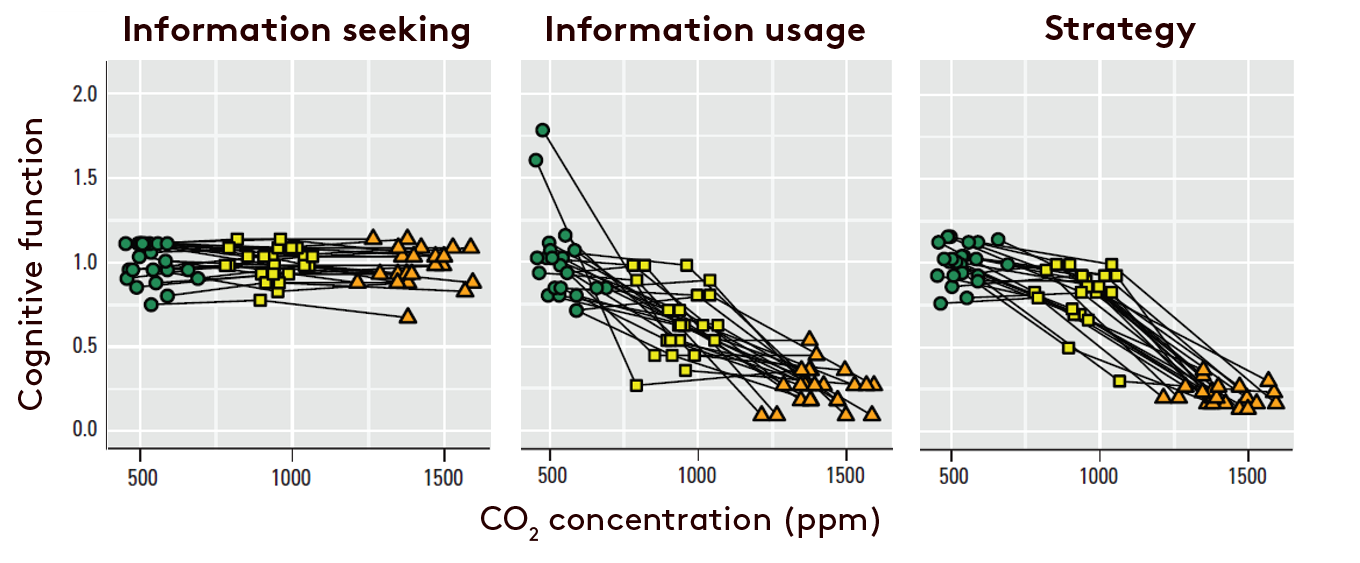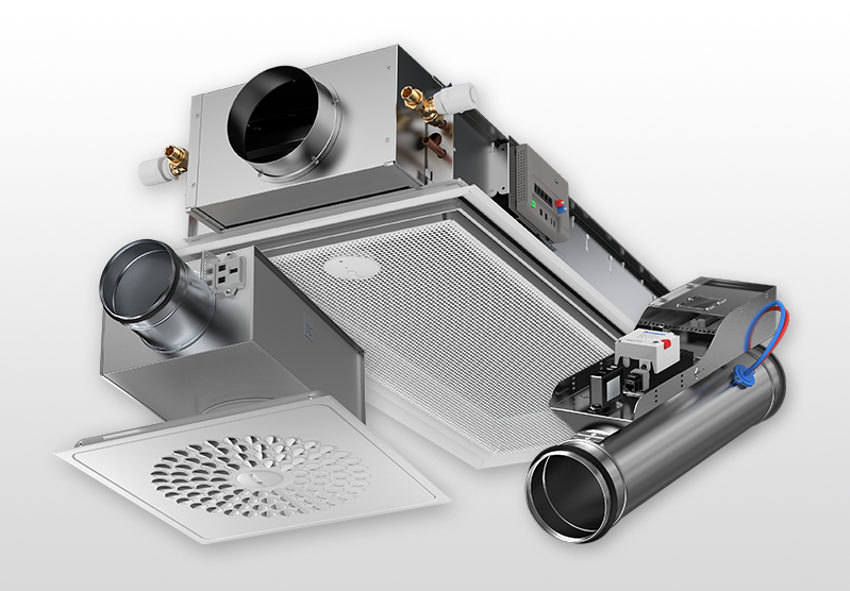Air quality
Air quality and health
Buildings unfortunately hold numerous sources of pollution. To create a healthy indoor climate, the polluted air needs to be extracted by the means of efficient ventilation and then be replaced by fresh air. Contaminants are emitted to the indoor air from furniture, construction materials and electronics – and our own bodies.
The number of pollutant substances are in the 1000s, making it impractical to measure them all individually. Instead, we normally refer them to them as volatile organic compounds (VOCs).
Up to 80% of the global population lives in areas where the World Health Organization's (WHO) threshold values for air pollution are exceeded. This is why it is important to ensure that the air replacing the contaminated indoor air is up to standard. By filtering the supply air, the amount of harmful particles may be reduced, e.g., the smallest ones, with a diameter of less than 1 micrometre and which can get past the body’s natural defences of cilia and mucous membranes, are lessend just like the risk of them entering the blood stream.
Read our blog, Why you should keep microparticles away from your supply air


Air quality and performance
In the atmosphere of the Earth is the concentration of carbon dioxide (CO2) at around 400 ppm. However, since we exhale CO2, the concentration in a poorly ventilated conference room for instance, will soon rise. When it reaches levels of 800-1000 ppm, it begins to adversely affect the performance of our brains. Research shows that thought processes that require different types of cognitive functions are affected to different degrees by the carbon dioxide level in the premises.
The diagrams below show the findings of an American study, where individuals conducted tests after being in a room with varying levels of carbon dioxide. The coloured symbols show the test result and carbon dioxide level. Each individual was tested in three environments where green dots = test result in an environment with a low carbon dioxide level, yellow square = medium carbon dioxide level, orange triangle = high carbon dioxide level. The three test points are interconnected with a dash for each individual.

Source: Allen, MacNaughton, Satish, Santanam, Vallarino & Spengler, Associations of Cognitive Function Scores with Carbon Dioxide, Ventilation, and Volatile Organic Compound Exposures in Office Workers: A Controlled Exposure Study of Green and Conventional Office Environments, Environmental Health Perspectives, National Institute of Environmental Health Sciences, 2015, USA
Findings
The above mentioned study, presented in the diagrams, reveal that work involving “information search” is almost not affected by a higher concentration of carbon dioxide. Information use and strategic thinking, on the other hand, are adversely affected. This means that we seem to be particularly sensitive to poor air quality in demanding situations that require more from us than, for instance, look for a search word or an image picturing something we are looking for.
Learn more about air quality and sleep at Swegon Air Academy


To measure is to know
There are several aspects of air quality, some may seem complex, but a good start is to measure and monitor indoor air quality so that the air handling can be adapted accordingly. A common metric is the CO2 concentration as this is easy to measure, quantify and apply limit values for. Described above, factors that impact our performance will be detected when CO2 is measured, while factors affecting health will not. A better way to adress a wider array of potential problems in terms of air quality is to measure and ventilate based on VOC concentration.
Swegon’s solutions for enhanced air quality
When a solution for supplying a building with fresh air of good quality is selected, a part of the problem is solved. However, it needs to be energy efficient and provide a complete healthy indoor climate where people can be at their best, today and tomorrow. In order to do so, a smart system is needed, for instance a solution which is capable of continuously measuring air quality and optimising the air supply, heating and cooling accordingly.
Ensure fresh air
Our air handling units supply buildings with fresh air, and thanks to our unique solutions that combine high energy efficiency and low leakage we provide an excellent foundation for creating healthy indoor climates. Watch the video on our Swegon GOLD air handling unit and its carry-over control, and learn more about prevention of leakage.
Our Swegon WISE is a complete system for demand controlled indoor climates. WISE encompasses numberous componens such as individual sensors at room level that measure CO2, VOC, relative humidity, temperature etc. It also holds room products that supply air, heats and cools. Additionally, the master control system analyses and optimises the operation of the entire indoor climate solution. A side from enabling an optimal indoor climate, WISE also enables the lowest possible energy consumption.
